Text



an ap named fil'p, they live on the spaceport city on ath that has been dubbed prothes, they sell shells and bones from athian organisms to tourists from all over the rings, at least until they can purchase a ship and get to a colony, this is the first newly designed ap, i plan to update the rest of them and post them, perhaps with a bit more information
#speculative biology#speculative zoology#speculative evolution#speculative planet#speculative world#spec bio#spec zoo#spec evo#spec planet#spec world#ath#exobiology#ap#fil'p
5 notes
·
View notes
Text
Thank you!
Maschora is now finished, it is going to take me a little while to start up and queue digerora, but it shouldnt take me too long, i hope you enjoy!
1 note
·
View note
Text
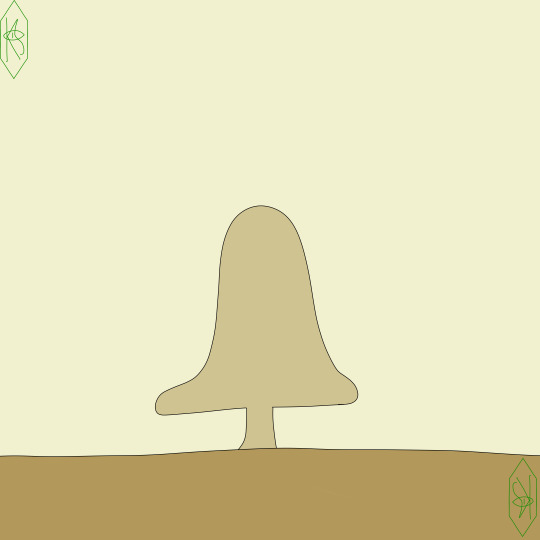
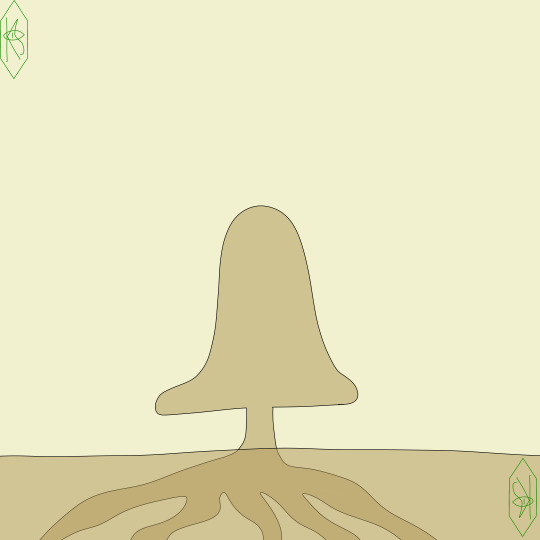
kamapanahyl, more commonly called a bell wart, are aquatic solumykitas which have deceptively converged on telluric mushrooms, unlike most telluric mushrooms they produce spores from all over their fruiting body instead of the bottom of their bell, has thin root like structures going all around the lakebeds and riverbeds and will braid them together into sturdy supports to keep their fruiting body in one position, they are very nutritious when prepared right, usually through a form of pickling which softens the wood into a more squishy meat like texture, if you have any questions about this organism please dont be afraid to ask im more than happy to answer
#speculative biology#speculative botany#speculative mycology#speculative evolution#speculative planet#speculative world#spec bio#spec botany#spec myco#spec evo#spec planet#spec world#ngiu◗#exobiology#kampanahyl#bell wart
6 notes
·
View notes
Text


arthrokalami, more commonly called a jointed stick, are tall sedereamischos which grow in distinct segments, they have a tuber at their base which all their roots grow out of and arthrokalami grow out of the top of this tuber, they will grow continuously till they reach the surface of the ammonia they reside in, they rely on common cliptooth to prune them so they dont reach that height since their segments will start to deform if they try to grow without ammonia to grow into, they reproduce purely asexually when their roots are separated through any sort of means, their root systems tend to be rather extensive containing multiple stick producing tubers, if you have any questions about this seelenlos please dont be afraid to ask im more than happy to answer
#speculative biology#speculative botany#speculative evolution#speculative planet#speculative world#spec bio#spec botany#spec evo#spec planet#spec world#ngiu◗#exobiology#arthrokalami#jointed stick
4 notes
·
View notes
Text


pefkorgi, more commonly called a spiked spire, are large amphimischos found frequently in forestbound lakes though can be found in rivers and streams and such, their spikes are photosynthetic and will slowly collapse into tough leaflike structures as they grow, they will move towards nearby movement, this behaviour is theorized as a way to defend themselves from being grazed upon, though this behaviour has given them the adaptation of reproducing through the spines that break off when they move, the behaviour of them moving has given them a bad reputation among ◗ta fishermen due to them interfering with their attempts at fishing, cutting fishing lines, stabbing them when they are in the ammonia, though their spines are tough and hard to eat, they have a soft spot on the top of their spire where they grow their spikes, this portion is rather soft and about as nutrient rich as the rest of the spikes, if you have any questions about this amphimischos please dont be afraid to ask
#speculative biology#speculative botany#speculative evolution#speculative planet#speculative world#spec bio#spec botany#spec evo#spec planet#spec world#ngiu◗#exobiology#pefkorgi#spiked spire
4 notes
·
View notes
Note
How much variety is there in the crested antennae's antennae? Do they come in different shapes or sizes? Are some types of antennae more desirable than others?
there isn't much variety in the shapes of their antennae, maybe they'll be missing a prong on one or two of their antennae, and their size will vary depending on their age, the ones seen in the image is the most desirable, thank you for the ask :)
#speculative biology#spec bio#exobiology#ceralophopteryx#crested antennae#ngiu◗#speculative world#voidspace#anonymous#ask
3 notes
·
View notes
Text
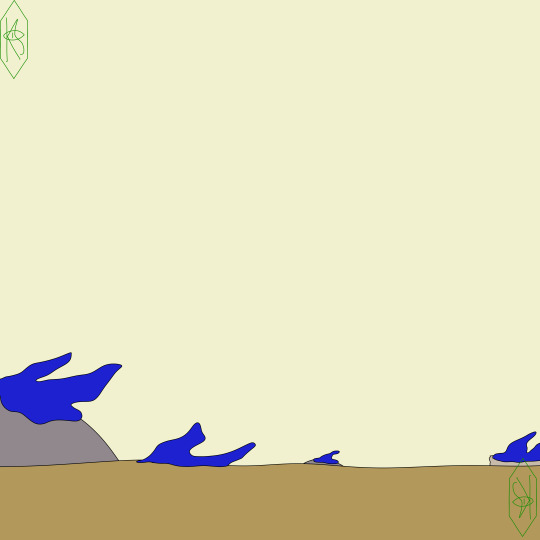
laspamallia, more commonly called a moss slime, are amorphous nodomusco, which grow on any solid surface, including sturdy sediment and other sedereamischos, the grow a filimentous layer of slime and will grow large extensions off of it which flow in the currents, they are a very common food item for almost every aquatic herbivorous seelenlos, and even terrestrial herbivores when they find it, they reproduce asexually through a mix of budding and regenerating their remains when they get eaten similar to telluric echinoderms, like most simple nodomusco they blur the line between colonial and multicellular, if you have any questions about this organism please dont be afraid to ask im more than happy to answer
#speculative biology#speculative botany#speculative evolution#speculative planet#speculative world#spec bio#spec botany#spec evo#spec planet#spec world#ngiu◗#exobiology#laspamallia#moss slime
7 notes
·
View notes
Text
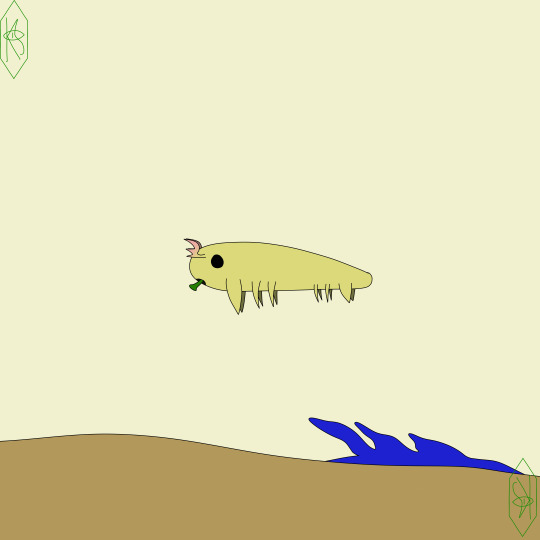
ceralophopteryx, more commonly called a crested antennae, are small ostoexoapo which have specialized antennae, which they use in many capacities for communicating and interacting with other crested antennae, releasing and accepting pheromones in allowing them to broadcast simple concepts over large reaches of their environment, they will also use the colours alongside intensive pheromone production as a form of sexual display when attempting to mate, if their mate accepts they will latch onto the other ceralophopteryx with their antennae while they reproduce to ensure neither drift away during the process, if crested antennae are in danger they will use their antennae to attack their predators, while also releasing plentiful amounts of pheromones to alert nearby ceralophopteryx to the danger, they are generalized herbivores and will eat pretty much any plant matter they come across, if you have any questions about this odd seelenlos please dont be afraid to ask im more than happy to answer
#speculative biology#speculative zoology#speculative evolution#speculative planet#speculative world#spec bio#spec zoo#spec evo#spec planet#spec world#ngiu◗#exobiology#ceralophopteryx#crested antennae
4 notes
·
View notes
Text

acanthopodobates, more commonly called a spined treader, are large bottom feeding thalasentomo, which have gained toxic spines derived from their foremost and hindmost mesolimbs, these spines are derived from their acidic saliva which is moved there from the digestive system through specialized veins, their eyes are specialized cone shapes designed to see primarily above and behind them, this trait combined with their toxic spines allow them to defend themselves while they passively sift through the sediment for nutrients, if they encounter another acanthopodobates they will mate and then locate a protrusion or hollow object to lay their eggs inside, their larvae will hatch and filterfeed till they have enough nutrients to mature, they will dig themselves a fair bit into the sediment and go into their dormant state while they mature, if you have any questions about this seelenlos please dont be afraid to ask im more than happy to answer
#speculative biology#speculative zoology#speculative evolution#speculative planet#speculative world#spec bio#spec zoo#spec evo#spec planet#spec world#ngiu◗#exobiology#acanthopodobates#spined treader
3 notes
·
View notes
Text
feel free to ask any questions about my world
44 notes
·
View notes
Text
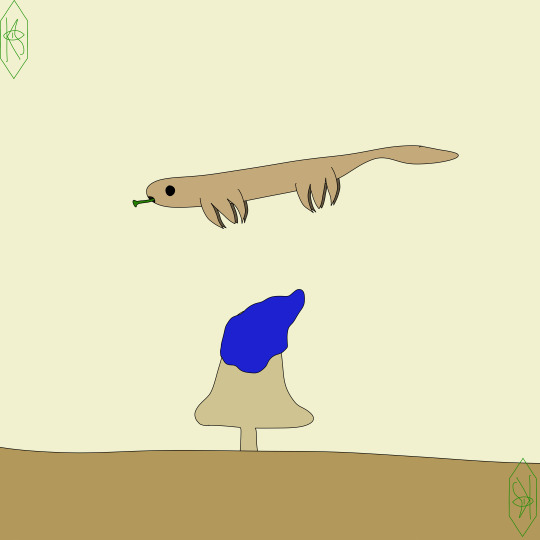
uroptoma, more commonly called a river finbug, are decently sized thalasentomo, which eat small game, eggs, and corpses, when when they reproduce the oviparent will lay their eggs in a large sac and give it to the graiparent and then swim away, the graiparent will protect the egg sac while the larvae develop and will drop it somewhere secluded once they begin hatching, the larvae will eat the egg sac and then go dormant till they mature, a large portion of their swimming power comes from their tail and they mostly use their fins to steer themselves around, though the swimming power it provides is not inconsequential, its theorized this is due to how the graiparents hold the egg sac, if you have any questions about this seelenlos please dont be afraid to ask i am more than happy to answer
#speculative biology#speculative zoology#speculative evolution#speculative planet#speculative world#spec bio#spec zoo#spec evo#spec planet#spec world#ngiu◗#exobiology#uroptoma#river finbug
2 notes
·
View notes
Text



ichthyosmilus, more commonly called a common cliptooth, are average sized ichthyongui, which compared to their mountainous relatives is rather large, they use their pseudobeak to break off parts of arthrokalami per joint, they will also scrape laspamallia off of rocks and wood, they will also chew on rocks to grind down their pseudobeak , when they are hatchlings they will eat primarily moss slime due to the lack of pseudobeak till adolescence, and will even lay their young in patches of laspamillia, providing them with safety and a decent amount of food straight out the egg, if you have any questions about this seelenlos please dont be afraid to ask i am more than happy to answer
#speculative biology#speculative zoology#speculative evolution#speculative planet#speculative world#spec bio#spec zoo#spec evo#spec planet#spec world#ngiu◗#exobiology#ichthyosmilus#common cliptooth
3 notes
·
View notes
Text
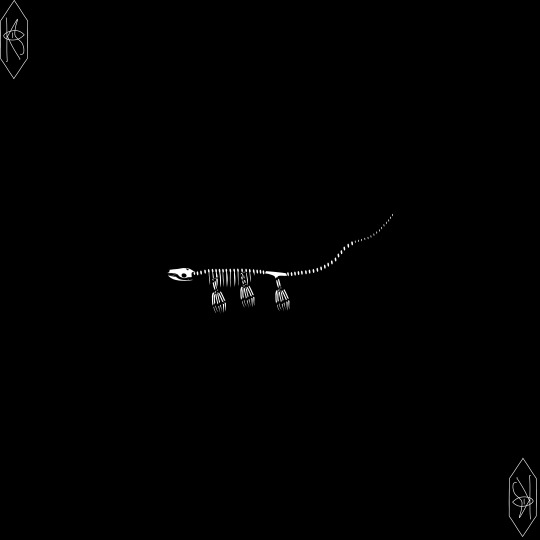
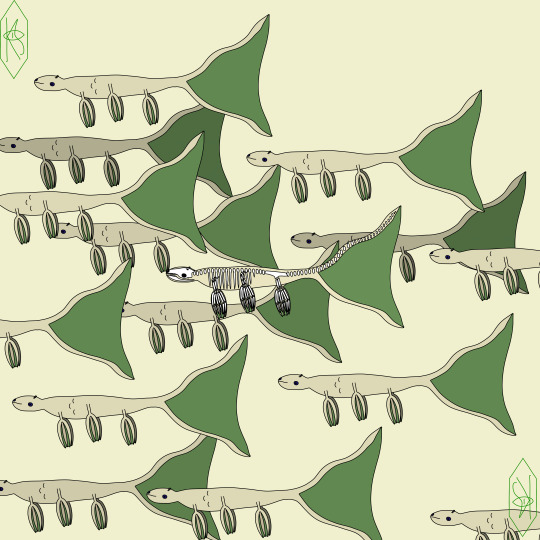

microcorporuro, more commonly called a minnow ribbontail, are small ichthyongui which fill almost every body of ammonia in maschoran forests, and will swim in large schools as a form of self defense, their large tails which they use for sexual display and also a last stitch effort in defense, using it to hit their predator and hopefully gain some distance, though usually this effort is in vain, their teeth are almost completely vestigial due to how they interfere with their filterfeeding, they will usually reproduce with their schools by just passively releasing eggs and fertelizing them en masse, which helps keep their populations large, if you have any questions about these small populous seelenlos please dont be afraid to ask im more than happy to answer
#speculative biology#speculative zoology#speculative evolution#speculative planet#speculative world#spec bio#spec zoo#spec evo#spec planet#spec world#ngiu◗#exobiology#microcorporuro#minnow ribbontail
5 notes
·
View notes
Text

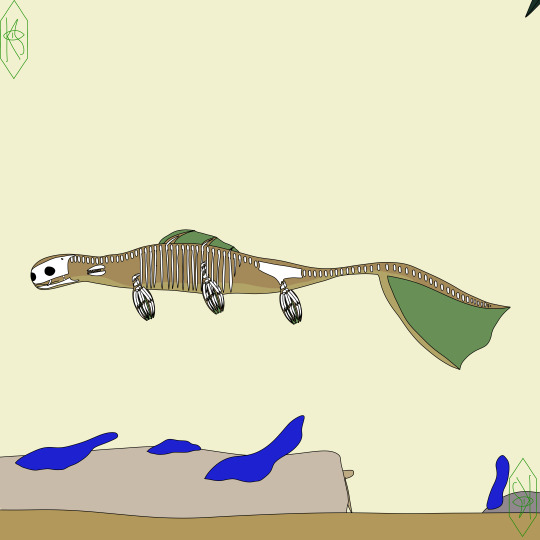

maiaichthys, more commonly called an eggless bijaw, are large relatives of largetailed bijaws of the maschoran mountains, they tend to be the apex predators of their environments and are very territorial, even when they reproduce it usually ends in the graiparent dying, maiaichthys are ovoviviparous, which is a fairly rare trait for icthyongui, once their young is about to hatch they will lay their “clutch” on a nearby corpse or dense foliage, unlike most bijaws they have a set of fangs in their front jaws which they use in territorial disputes, to avoid oviparents attacking their young while they mature their clutches are very large and are usually “laid” outside of the oviparents territory, if you have any questions about this seelenlos please dont be afraid to ask im more than happy to answer
#speculative biology#speculative zoology#speculative evolution#speculative planet#speculative world#spec bio#spec zoo#spec evo#spec planet#spec world#ngiu◗#exobiology#maiaichthys#eggless bijaw
2 notes
·
View notes
Text


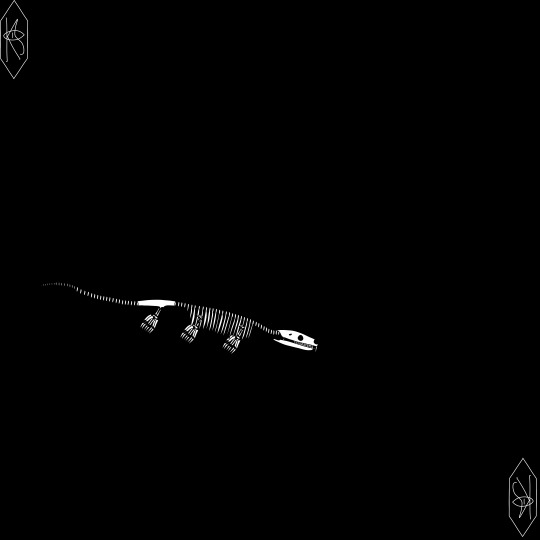
a handful of skeletons from the maschoran forests rivers, streams, and lakes
#speculative biology#speculative zoology#speculative evolution#speculative planet#speculative world#spec bio#spec zoo#spec evo#spec planet#spec world#ngiu◗#exobiology#skeletons
6 notes
·
View notes
Text

astomaverm, more commonly called a wood worm, are unique ostoexoapo which fill the plants of the maschoran forest, their life cycle is rather unique to ostoexoapo having three life stages compared to the usual two life stages most ostoexoapo have, similar to most ostoexoapo they have their larval stage where they lack their shells and have no reproductive organs, they have a second stage which most ostoexoapo dont have, which is a stage similar to their larval stage where they have thicker skin, similar to a telluric velvet worm, and also functional reproductive organs, though they are incapable of laying eggs in this life stage, once they fully mature they gain their shell and lose the ability to eat, going so far as to lose their stomach, they wander around laying small clutches of about 5 eggs inside empty holes they find on any form of wood they find, this leads to a trend of large hoards of astomaverm bursting out of infested pieces of wood every year, if you have any questions about this seelenlos please dont be afraid to ask im more than happy to tell you
#speculative biology#speculative zoology#speculative evolution#speculative planet#speculative world#spec bio#spec zoo#spec evo#spec planet#spec world#ngiu◗#exobiology#astomaverm#wood worm
6 notes
·
View notes
Text

xenodiaitapterus, more commonly called an infesting uking, are generalist scavengers which will fly around the maschoran forest and eat any rotting matter they come across, they are widely considered pests due to them accelerating the decomposition process, they will usually mate with whatever xenodiaitapterids they find around decaying matter while they feed and then lay a few eggs in the matter and fly away, leading to a plentiful meal for the larvae under the right conditions, on a large enough corpse infesting uking will be able to spend several days on the corpse before leaving it for their young, unlike most uking they rely on their radula more than the acidic enzymes their proboscis since the majority of their eating process relies on the intensive mastication done by their radula, if you have any questions about this seelenlos please dont be afraid to ask im more than happy to answer
#speculative biology#speculative zoology#speculative evolution#speculative planet#speculative world#spec bio#spec zoo#spec evo#spec planet#spec world#ngiu◗#exobiology#xenodiaitapterus#infesting uking
5 notes
·
View notes